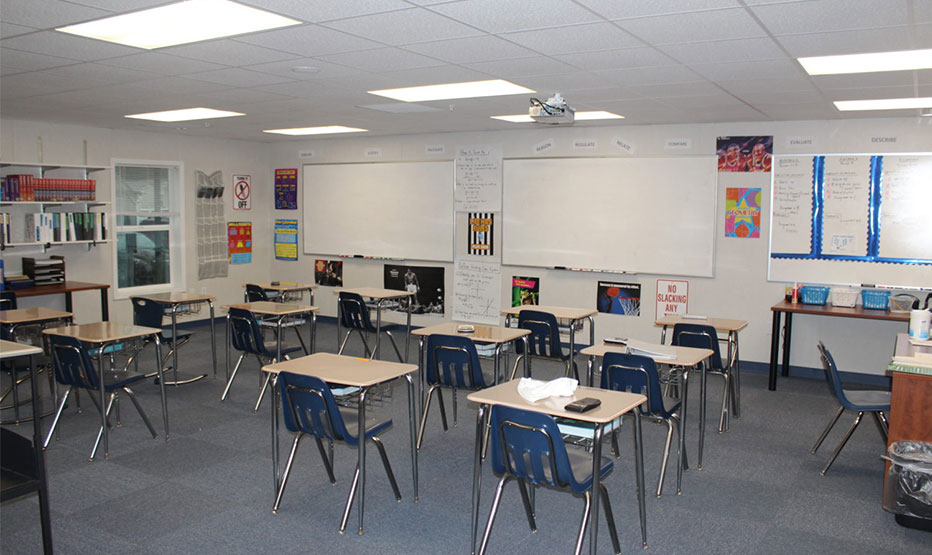
The Benefits Of Modular Classroom Units Vs Standard Buildings
Modular classroom units have emerged as a popular alternative to traditional school buildings, offering educational institutions flexible and cost-effective solutions for expanding their learning spaces. With companies such as Portable Offices (UK based) offering great mobile classroom options, if you are considering a school or campus expansion these portable structures provide a range of benefits over standard construction, allowing schools to quickly adapt to changing enrollment needs and budget constraints while maintaining a high-quality learning environment.
Table of Contents
Outdoor Classrooms
Outdoor classrooms provide numerous benefits for students, enhancing both their learning experience and overall well-being. These outdoor spaces promote hands-on learning, allowing students to engage directly with nature and apply theoretical concepts in real-world settings. Studies have shown that exposure to nature can improve cognitive abilities, creativity, and problem-solving skills. Additionally, outdoor learning environments contribute to better physical health by encouraging movement and activity, while also reducing stress levels and increasing concentration.
Outdoor classrooms foster environmental awareness, helping students develop a deeper appreciation for nature and sustainability. They also offer versatility, serving as gathering places for various activities beyond traditional lessons, such as outdoor dining and social engagement. By providing a permanent space for outdoor education within school grounds, these classrooms allow for long-term structured learning experiences without the need to leave campus.
Advantages and Disadvantages
Modular classroom units offer several advantages and disadvantages compared to standard buildings. Here’s a breakdown of the key pros and cons:
Pros of Modular Classroom Units
- Cost-effective: Modular buildings can be up to 50% cheaper than traditional construction
- Faster construction: Up to 70% quicker than traditional building methods
- Less disruption: Shorter time on site means minimal interruption to school activities
- Flexibility: Can be temporary, permanent, or demountable to fit various needs
- Sustainability: Buildings can be reused or materials recycled at the end of their life
- Weather-resistant construction: Most work is done indoors, reducing weather-related delays
- Quality control: Factory-controlled environment ensures consistent quality
- Customizable: Can be designed to meet specific school needs
- Environmentally friendly: Often built with sustainable materials and energy-efficient designs
Cons of Modular Classroom Units
- Limited design options: Some companies may offer only certain shapes and sizes
- Perception issues: Sometimes perceived as less professionally built than traditional structures
- Transportation challenges: Size limitations due to road transport requirements
- Initial investment: May require a considerable upfront cost, despite long-term savings
- Potential integration issues: Designs may not always seamlessly match existing school facilities
Many of these disadvantages can be mitigated by choosing experienced modular building providers who offer customized solutions and high-quality construction. When considering modular classrooms, schools should carefully evaluate their specific needs, budget constraints, and long-term plans to determine if this option is the best fit for their educational environment.
Flexible Learning Spaces
Flexible learning spaces are innovative educational environments designed to support a variety of teaching methods and learning experiences. Unlike traditional classrooms with fixed layouts, these spaces feature adaptable furniture and equipment that can be easily rearranged to suit different pedagogical approaches and student needs.
Key characteristics of flexible learning spaces include:
- Moveable furniture: Tables, chairs, and storage units that can be easily reconfigured.
- Varied seating options: Traditional chairs, soft seating, standing desks, and even floor cushions.
- Collaborative areas: Spaces for group work and peer interaction.
- Technology integration: Mobile devices, interactive whiteboards, and decentralized technology access.
- Adaptable layout: The ability to quickly transition between different learning settings.
Research has shown that flexible learning spaces can have significant positive impacts on student behavior and engagement. A study comparing traditional classrooms to flexible learning spaces found that students in the latter spent:
- More time collaborating (d = 1.33, p = 0.001)
- More time interacting positively with peers (d = 0.88, p = 0.001)
- More time actively engaged with lesson content (d = 0.50, p = 0.001)
- Less time being taught in a whole-class setting (d = -0.65, p = 0.001)
- Less time engaged in teacher-led instruction (d = -0.75, p = 0.001)
- Less time working individually (d = -0.79, p = 0.001)
These spaces offer several benefits to students:
- Increased engagement: The dynamic environment keeps students interested and motivated.
- Personalized learning: Students can choose workspaces that best suit their learning styles.
- Improved collaboration: Flexible layouts facilitate group work and peer interaction.
- Enhanced creativity: Varied environments stimulate creative thinking and problem-solving.
- Better physical health: Movement and postural variation can improve comfort and attention.
For educators, flexible learning spaces provide opportunities to implement diverse teaching strategies and adapt to different learning needs. However, they also require additional planning and effort to establish norms and effectively utilize the space.
While flexible learning spaces offer numerous advantages, it’s important to balance flexibility with consistency. Students and teachers still benefit from some level of predictability in their learning environment, which can support place attachment and effective learning.
As education continues to evolve, flexible learning spaces are increasingly seen as a way to create more engaging, student-centered learning environments that can adapt to changing pedagogical approaches and student needs.
Adaptable Campus Expansion
These spaces offer significant advantages when it comes to expanding schools or colleges, providing adaptable solutions that can accommodate growing student populations and evolving educational needs. These spaces are particularly beneficial for institutions facing fluctuating enrollment or seeking to optimize their existing facilities.
One of the key benefits of flexible learning spaces for expansion is their ability to maximize the efficiency of physical environments. By incorporating multi-functional furniture and adaptable layouts, schools can make the most of their available space. This is especially advantageous for institutions with limited room for growth or those experiencing temporary surges in student numbers.
Modular classroom units, a type of flexible learning space, offer a rapid and cost-effective expansion solution. These units can be constructed up to 70% faster than traditional buildings, allowing schools to quickly respond to increased enrollment demands. The speed of installation minimizes disruption to ongoing school activities, a crucial factor for educational continuity.
Flexibility in design also allows for future-proofing of school facilities. As educational needs and teaching methods evolve, flexible spaces can be easily reconfigured to accommodate new programs, technologies, or pedagogical approaches. This adaptability ensures that expansion efforts remain relevant and effective in the long term.
Financial considerations are another significant advantage of flexible expansion solutions. Modular classrooms, for instance, can be up to 50% cheaper than traditional construction methods. This cost-effectiveness allows schools to allocate resources more efficiently, potentially enabling larger-scale expansions or investments in other areas of educational improvement.
The sustainability aspect of flexible learning spaces aligns with many institutions’ environmental goals. Modular buildings can often be reused or have their materials recycled at the end of their life cycle. This approach reduces waste and supports schools’ efforts to minimize their environmental impact while expanding.
However, it’s important to note that expanding with flexible learning spaces may present some challenges. There might be limitations in design options, and there could be perception issues regarding the quality of non-traditional structures. Additionally, integrating these spaces with existing facilities may require careful planning to ensure a cohesive campus environment.
Despite these potential drawbacks, the benefits of using flexible learning spaces for expansion often outweigh the challenges. Their adaptability, cost-effectiveness, and ability to quickly meet changing educational needs make them an attractive option for schools and colleges looking to grow and evolve in a dynamic educational landscape.
Budget-Friendly School Solutions
Modular classrooms offer significant cost benefits for school budgets, providing an economical solution to space constraints and growing student populations. These prefabricated structures can be a more affordable option compared to traditional brick-and-mortar construction, potentially saving schools substantial amounts on their expansion projects.
One of the primary cost advantages of modular classrooms is their lower initial investment. Modular buildings can cost as little as £1,500 per square metre, with complete classrooms starting from £48,000. This represents a considerable saving compared to traditional construction methods, which often involve higher material and labor costs.
The speed of construction for modular classrooms also contributes to cost savings. With up to 70% faster build times than conventional methods, schools can significantly reduce labor costs and minimize disruption to ongoing educational activities. This efficiency not only saves money but also allows schools to quickly adapt to changing enrollment needs without lengthy construction periods.
Energy efficiency is another area where modular classrooms can improve school budgets. These structures are typically well-insulated and equipped with double glazing, leading to lower heating and cooling costs throughout the year. In the current climate of rising energy prices, this can result in substantial long-term savings for schools.
Maintenance costs for modular classrooms can also be lower than those for traditional buildings. The modular design allows for easy and cost-effective replacement of individual components, reducing the overall expense of upkeep. This can be particularly beneficial for schools dealing with tight maintenance budgets.
Furthermore, modular classrooms offer flexibility that can translate into financial benefits. If a school’s needs change, these structures can be relocated or repurposed, potentially avoiding the costs associated with new construction or extensive renovations. This adaptability ensures that the initial investment continues to provide value even as the school’s requirements evolve.
Some schools have found creative ways to leverage modular classrooms to generate additional income. For instance, these spaces can be rented out for community events or adult education classes outside of school hours, providing a new revenue stream for the institution.
While the upfront cost of a modular classroom may still represent a significant investment for some schools, various financing options are available. Some suppliers offer leasing arrangements or can assist in identifying funding sources, particularly for projects with an environmentally-friendly focus.
It’s important to note that while used modular classrooms can offer even greater cost savings, schools should carefully consider the long-term value and durability of their investment. A well-designed, high-quality modular classroom can provide a cost-effective solution that meets the school’s needs for decades to come.
In Conclusion
Modular classrooms present a cost-effective alternative for schools looking to expand their facilities while managing tight budgets. Through lower initial costs, reduced construction time, energy efficiency, and potential for additional income generation, these structures can significantly improve a school’s financial








